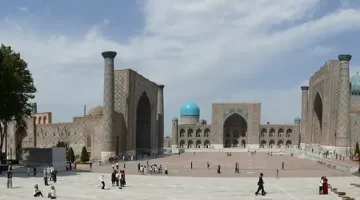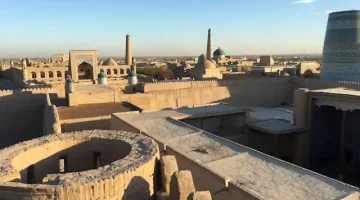Utica
The Travel Pages visits Utica, the archaeological site near Bizerte in Tunisia and the first Phoenician settlement in North Africa.
Heading north from Tunis, 37km (23 miles) away is the site of the ancient city of Utica. It’s rather neglected compared to the major sites south of Tunis, like El Djem, but as it’s only about 3km (1.9 miles) off the Tunis-Bizerte road it’s well worth stopping off to see.

Founding of Utica
Utica was possibly founded by the Phoenicians in around 1100BC, which makes it 300 years older than Carthage. This date was in an account by Pliny the Elder, but no archaeological evidence older than the 8th century BC has been discovered. Either way, it was the first Phoenician settlement in North Africa.
Whichever date is accurate, Utica owed its importance to the fact that it was a port, which is easy to forget as it is now some 12km (7.4 miles) from the sea.
After the founding of Carthage, Utica came under its dominance, but when the Romans arrived Utica allowed itself to be used as a base, and after the Roman triumph over Carthage in the Punic Wars, it was given the status of a free city.
Utica’s fortunes ebbed and flowed, like the tides, until the literal and irreversible ebbing of the tides left it land-locked, though the full reasons for its decline and eventual abandonment are not known. Much excavation is still taking place at the site, so its full secrets may one day be unearthed.
What to See at Utica

At present, the finest remains are the Roman baths, villas, and the Punic cemetery with graves dating from the 7th to the 4th century BC. Some of the villas still have mosaics in place, one of the best being the large floor of the Maison de la Cascade (House of the Waterfall), whose two courtyards each have a fountain at their centre. The northern courtyard with its waterfall effect gives the house its name.
Utica Museum

Some of the mosaics and other artifacts have been moved to the museum, which you’ll find about 1km (0.6 miles) back towards the Tunis-Bizerte road. It’s worth visiting the museum first, to get some historical background on what you’ll be seeing at the site.
OUR TUNISIA GUIDE
This Travel Guide to Tunisia is by award-winning travel writer Mike Gerrard. The guide covers Tunis, Carthage, Sidi Bou Said, archaeological sites like Dougga, excursions to the Sahara Desert, and all the main Tunisian beach resorts and tourist towns.
Amazon 5-Star Reviews
‘Interesting information straight to the point and informative, I like the mix of tourist information and cultural knowledge and it is not a lengthy read, just enough to inform you about Tunisia.’
‘Very useful information including things to see and do and even how to avoid local pit falls good overview of all the areas.’
‘Very useful guide for visiting Tunisia and very good value for the money. I found the book to be very informative.’
Read more on Amazon or click on the cover.













